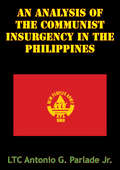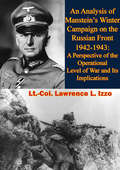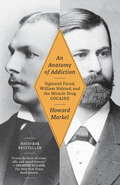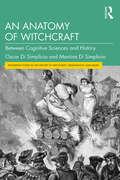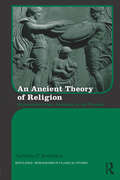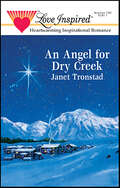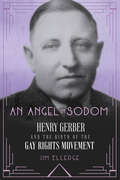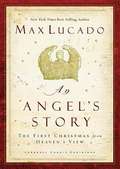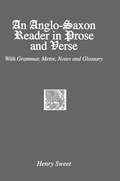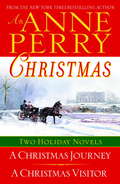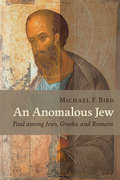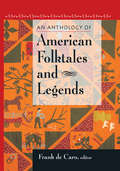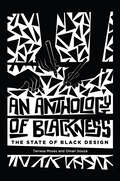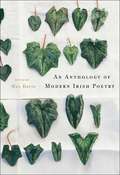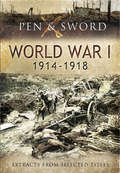- Table View
- List View
An Analysis Of The Communist Insurgency In The Philippines
by Ltc Antonio G. Parlade Jr.The Maoist-inspired Communist Party of the Philippines celebrated its 37th anniversary on December 2005. It marks a long history of violence, terror, and instability in the archipelagic country of 87 million people, causing thousands of casualties among government troops, insurgents, and including civilians. This study seeks to find a lasting solution that will finally bring to a close the final chapter to insurgency in the country. It was approached from a historical point of view by studying the events that lead to the birth of the movement in 1932 until its defeat in 1954. A new chapter of the Maoist insurgency started in 1969 and this movement emerged into a formidable guerrilla force that became the primary threat to the nation's security. This paper tries to analyze how that insurgency persisted to challenge the government this far and what went wrong with the government's response. It will attempt to answer the primary question: How to defeat the communist insurgency?
An Analysis Of The Norwegian Resistance During The Second World War
by Major Kim M. JohnsonThe Norwegian Resistance during the Second World War (April 1940-June 1945) was basically a peaceful set of events conducted by the civilian population as well as underground military organizations. While sabotage and other hostile resistance acts did occur, they were not great in number. It should not be overlooked the Norwegian Armed Forces did fight for 63 days before admitting defeat to Germany.This paper will answer the question "Was the Norwegian Resistance successful against the German Nazis once their country was taken over by them during the Second World War?" The Warden theory of the organization of a system is used to categorize the Resistance movement, dissecting it and placing it in categories. Centers of gravity are noted and discussed. While the Norwegians did not have the military strength to beat the Germans, they did win many battles via their Resistance to the German Rule. These victories along with German acknowledgment prove the Norwegian Resistance was successful against the German Army and its rule over Norway.
An Analysis Of Unit Cohesion In The 42nd Alabama Infantry
by Samuel L. Askew IIIOn 16 May 1862, 904 soldiers formed ranks for the first time and unfurled the virgin colors of the 42nd Alabama Infantry Regiment. These 904 soldiers were a mixture of veterans, volunteers, conscripts, and substitutes. The regiment participated in nine western theater battles and their associated campaigns. These campaigns included Corinth, Vicksburg, Lookout Mountain, Atlanta, and Bentonville. Not one battle was a victory but the heat of battle forged a band of brothers tempered with time. The regiment cased its colors for the last time on 9 April 1865 in a desolate North Carolina field; only ninety-eight soldiers remained at the end of this bloody national struggle. This thesis will identify the timeless factors of cohesion within the 42nd Alabama. This thesis will further determine the most prominent of these factors, specifically within the remaining ninety eight soldiers. Finally, this thesis will explore the value of cohesion to the current military force. This thesis incorporated sources from the The War of the Rebellion: A Compilation of the Official Records of the Union and Confederate Armies, Confederate Veteran, The Southern Historical Papers, personal diaries and letters, census records, compiled service records, sources from the Alabama State Archives and the National Park Service. After the examination of numerous factors, to include discipline, leadership, and morale, the common factor that held the core members of the unit together until the end was the "original volunteer" soldiers of 1861. These soldiers formed the cohesive bond of the unit by instilling a common conviction and devotion to duty within the 42nd Alabama. The final analysis reinforces the value of the volunteer soldier and the worth of an "all-volunteer" force.
An Analysis of Gender and Ethnic Prejudices in Erasmus's Adagia and Other Writings
by Nathan RonThis book explores Erasmus's ethnic and gender prejudices. It does not in any way seek to undermine the esteem in which Erasmus is generally held, as a prince of the humanists; it is rather a consideration of common early modern prejudices. The book&’s principal innovation is the use of Erasmus&’s commentaries on thousands of Greek and Roman proverbs (his adagia) as a source for examining Erasmus&’s worldview. Researchers have often considered the adages as not voicing or reflecting Erasmus&’s views, and as such have chosen to ignore them. However, this book shows that Erasmus occasionally expresses his opinions through the adages, giving us an invaluable window into his worldview. An Analysis of Gender and Ethnic Prejudices in Erasmus's Adagia and Other Writings is essential reading for all scholars and researchers of early modern philosophy and intellectual history especially those researching the thought of Erasmus.
An Analysis of Manstein’s Winter Campaign on the Russian Front 1942-1943: A Perspective of the Operational Level of War and Its Implications
by Lt.-Col. Lawrence L. IzzoThis study is a historical analysis of the campaign waged by Field Marshal von Manstein on the Russian southern front during the winter 1942-43. The study begins just after the 6th Army's encirclement in Stalingrad and describes the four principal phases of Manstein's campaign: the attempted relief of the 6th Army; the protection of Army Group A as it disengaged from the Caucasus; the prevention of Manstein's lines of communications from being cut; and the counterblow to regain the initiative.The lessons learned from the campaign provide a perspective of battle at the operational level of war. The factors leading to Manstein's success are discussed and include: superior generalship at the operational level; superior tactical maturity of the Germans; and German tactical and operational agility. The study describes the transition from the operational defensive to the operational offensive and how a defender can have the initiative. Manstein's use of depth is explained. The concepts of center of gravity and operational art as they pertain to this campaign are also described.The study concludes with the implications of the lessons learned for a NATO-Soviet conflict in a central European scenario. The study points out that Manstein demonstrated that victory is possible even when forced to react to the enemy's plan. The ability of NATO to replicate, today, the agility of Manstein's forces and the synchronization achieved by his commanders is questioned. The implications of NATO's lack of operational depth, in contrast to Manstein, are described. The impact of changes in force design since World War II are also explained.
An Anatomy of Addiction: Sigmund Freud, William Halsted, and the Miracle Drug Cocaine
by Howard MarkelFrom acclaimed medical historian Howard Markel, author of When Germs Travel, the astonishing account of the years-long cocaine use of Sigmund Freud, young, ambitious neurologist, and William Halsted, the equally young, pathfinding surgeon. Markel writes of the physical and emotional damage caused by the then-heralded wonder drug, and how each man ultimately changed the world in spite of it--or because of it. One became the father of psychoanalysis; the other, of modern surgery. Both men were practicing medicine at the same time in the 1880s: Freud at the Vienna General Hospital, Halsted at New York's Bellevue Hospital. Markel writes that Freud began to experiment with cocaine as a way of studying its therapeutic uses--as an antidote for the overprescribed morphine, which had made addicts of so many, and as a treatment for depression. Halsted, an acclaimed surgeon even then, was curious about cocaine's effectiveness as an anesthetic and injected the drug into his arm to prove his theory. Neither Freud nor Halsted, nor their colleagues, had any idea of the drug's potential to dominate and endanger their lives. Addiction as a bona fide medical diagnosis didn't even exist in the elite medical circles they inhabited. In An Anatomy of Addiction, Markel writes about the life and work of each man, showing how each came to know about cocaine; how Freud found that the drug cured his indigestion, dulled his aches, and relieved his depression. The author writes that Freud, after a few months of taking the magical drug, published a treatise on it, Über Coca, in which he described his "most gorgeous excitement." The paper marked a major shift in Freud's work: he turned from studying the anatomy of the brain to exploring the human psyche. Halsted, one of the most revered of American surgeons, became the head of surgery at the newly built Johns Hopkins Hospital and then professor of surgery, the hospital's most exalted position, committing himself repeatedly to Butler Hospital, an insane asylum, to withdraw from his out-of control cocaine use. Halsted invented modern surgery as we know it today: devising new ways to safely invade the body in search of cures and pioneering modern surgical techniques that controlled bleeding and promoted healing. He insisted on thorough hand washing, on scrub-downs and whites for doctors and nurses, on sterility in the operating room--even inventing the surgical glove, which he designed and had the Goodyear Rubber Company make for him--accomplishing all of this as he struggled to conquer his unyielding desire for cocaine. An Anatomy of Addiction tells the tragic and heroic story of each man, accidentally struck down in his prime by an insidious malady: tragic because of the time, relationships, and health cocaine forced each to squander; heroic in the intense battle each man waged to overcome his affliction as he conquered his own world with his visionary healing gifts. Here is the full story, long overlooked, told in its rich historical context.From the Hardcover edition.
An Anatomy of Witchcraft: Between Cognitive Sciences and History (Routledge Studies in the History of Witchcraft, Demonology and Magic)
by Martina Di Simplicio Oscar Di SimplicioMuch has been written on witchcraft by historians, theologians, philosophers, and anthropologists, but nothing by scientists. This book aims to reappraise witchcraft by applying to it the advances in cognitive sciences. The book is divided into four parts. Part I ("Deep History") deals with human emotions and the drive to represent witches as evil female agents. Part II ("Historical Times") focuses on those rare state and church repressions of malefice, which, surprisingly, did not feature in Islamic lands. Modern urbanization dealt a blow to the rural civilizations where accusations of witchcraft were rife. Part III ("In the Laboratory") applies neuroscience to specific case studies to investigate the personification of misfortune, the millenary stereotype witch = woman, the reality of evil, and the phenomenon of treasure hunting. Part IV ("Millenials") wonders whether intentional malefic hatred in a closed chapter in the history of humanity. An Anatomy of Witchcraft is ideal reading for students and scholars. Given its interdisciplinary nature, the book will be of interest to scholars from many fields including evolutionary psychology, anthropology, women’s history, and cognitive sciences.
An Ancient Evil: Disturbing and macabre events in medieval England (Ancient Egypt Trilogy Ser. #1)
by Paul DohertyAs the travellers set out on their pilgrimage, the first tale of death and deceit falls to the Knight...Paul Doherty relates the Knight's tale in An Ancient Evil - a tale of mystery and murder as he goes on pilgrimage from London to Canterbury. Perfect for fans of Ellis Peters and Susanna Gregory.As the travellers gather in the Tabard Inn at the start of a pilgrimage to pray before the blessed bones of St Thomas à Becket in Canterbury, they agree eagerly to host Harry's suggestion of amusing themselves on each day of their journey with one tale, and each evening with another - but the latter to be of mystery, terror and murder.The Knight begins that evening: his tale opens with the destruction of a sinister cult at its stronghold in the wilds of Oxfordshire by Sir Hugo Mortimer during the reign of William the Conqueror, and then moves to Oxford some two hundred years later where strange crimes and terrible murders are being committed. The authorities seem powerless but Lady Constance, Abbess of the Convent of St Anne's, believes the murders are connected with the legends of the cult and she petitions the King for help.As the murders continue unabated, special commissioner Sir Godfrey Evesden and royal clerk Alexander McBain uncover clues that lead to a macabre world sect, which worships the dark lord. But they can find no solution to a series of increasingly baffling questions, and matters are not helped by the growing rift between Sir Godfrey and McBain for the hand and favour of the fair Lady Emily...What readers are saying about Canterbury Tales Mysteries:'Simply one of the best books ever written''An intriguing tale which keeps one entertained up to the last page''Spellbinding'
An Ancient Evil: Disturbing and macabre events in medieval England (Ancient Egypt Trilogy Ser. #1)
by Paul DohertyAs the travellers gather in the Tabard Inn at the start of a pilgrimage to Canterbury, they agree to amuse themselves on each day of their journey with one tale and each evening with another - but the latter to be of mystery, terror and murder. And so begins the Knight's tale. It opens with the destruction of a sinister cult at its stronghold in the wilds of Oxfordshire during the reign of William the Conqueror, and then moves to Oxford some two hundred years later where terrible murders are being committed. The authorities seem powerless but the Abbess of the Convent of St Anne's, believes the murders are connected with the legends of the cult and she petitions the King for help. As the murders continue unabated, special commissioner Sir Godfrey Evesden uncovers clues that lead to a macabre world sect, which worships the dark lord. But he can find no solution to a series of increasingly baffling questions and matters soon worsen...
An Ancient Evil: The Knight's Tale of Mystery and Murder as He Goes on Pilgrimage from London to Canterbury (Canterbury Tales of Mystery And Murder #1)
by P. C. DohertyAn Ancient Evil inaugurates an ingenious new series of historical mysteries by P. C. Doherty, each one using characters from Chaucer's Canterbury Tales. In Chaucer's poem, the pilgrims narrate tales to pass the time during their journey to the sacred shrine of Canterbury,Doherty's pilgrims entertain their companions with stories of mystery, terror, and murder. The Knight's Tale begins with the story of an ancient evil: the destruction of a sinister vampire cult that thrived in the wilderness of Oxfordshire during the reign of William the Conqueror. The tale then leaps two hundred years ahead to Oxford, where students are disappearing and citizens are murdered in a bizarre and brutal fashion. The sheriff of the city and the university authorities are baffled, but Lady Constance, Abbess of the Convent of St. Anne's, believes the murders are connected with the legends of the cult, and petitions the king for help. Two investigators, special commissioner Sir Godfrey Evesden and royal clerk Alexander McBain, arrive in Oxford and begin an investigation. The Archbishop of Canterbury sends unusual assistance in the person of the blind exorcist Dame Edith Mohun who, as a girl, had a horrifying experience with what may have been a remnant of that ancient cult. What this trio discovers and the repercussions for the city and the university form the scarily delightful plot of this novel.
An Ancient Theory of Religion: Euhemerism from Antiquity to the Present (Routledge Monographs in Classical Studies)
by Nickolas RoubekasAn Ancient Theory of Religion examines a theory of religion put forward by Euhemerus of Messene (late 4th—early 3rd century BCE) in his lost work Sacred Inscription, and shows not only how and why euhemerism came about but also how it was— and still is—used. By studying the utilization of the theory in different periods—from the Graeco-Roman world to Late Antiquity, and from the Renaissance to the twenty-first century—this book explores the reception of the theory in diverse literary works. In so doing, it also unpacks the different adoptions and misrepresentations of Euhemerus’s work according to the diverse agendas of the authors and scholars who have employed his theory. In the process, certain questions are raised: What did Euhemerus actually claim? How has his theory of the origins of belief in gods been used? How can modern scholarship approach and interpret his take on religion? When referring to ‘euhemerism,’ whose version are we employing? An Ancient Theory of Religion assumes no prior knowledge of euhemerism and will be of interest to scholars working in classical reception, religious studies, and early Christian studies.
An Angel for Dry Creek
by Janet TronstadA REAL LIVE ANGEL IN DRY CREEK, MONTANA?Not quite. But from the first sight of Glory Beckett framed in the light of her car's high beams, Matthew Curtis could have sworn that she was a heavenly gift sent to heal both his faith and his heart. And what's more, so could the whole town! The pressures of being angelic were downright stressful. But how could Glory resist Matthew's smile or his adorable twin boys? And it looked as if it would take a miracle to convince anyone in town that she wasn't the least bit celestial, let alone that her presence in Dry Creek might even put them all in danger!
An Angel for May
by Melvin BurgessTam travels back in time to his small English town at the time of World War II, where his friendship helps a traumatized girl living on a farm just outside the town.
An Angel in Sodom: Henry Gerber and the Birth of the Gay Rights Movement
by Jim ElledgeHenry Gerber was the father of American gay liberation. Born in 1892 in Germany, Henry Gerber was expelled from school as a boy and lost several jobs as a young man because of his homosexual activities. He emigrated to the United States and enlisted in the army for employment. After his release, he explored Chicago's gay subculture: cruising Bughouse Square, getting arrested for "disorderly conduct," and falling in love. He was institutionalized for being gay, branded an "enemy alien" at the end of World War I, and given a choice: to rejoin the army or be imprisoned in a federal penitentiary. Gerber re-enlisted and was sent to Germany in 1920. In Berlin, he discovered a vibrant gay rights movement, which made him vow to advocate for the rights of gay men at home. He founded the Society for Human Rights, the first legally recognized US gay-rights organization, on December 10, 1924. When police caught wind of it, he and two members were arrested. He lost his job, went to court three times, and went bankrupt. Released, he moved to New York, disheartened. Later in life, he joined the DC chapter of the Mattachine Society, a gay-rights advocacy group founded by Harry Hay who had heard of Gerber's group, leading him to found Mattachine.An Angel in Sodom is the first and long overdue biography of the founder of the first US gay rights organization.
An Angel's Story: The First Christmas From Heaven's View
by Max LucadoIn this book, Max Lucado uses his imagination and scripture to tell the Christmas story from heaven's view with all of the spiritual warfare that might have occurred.
An Anglo-Saxon Reader in Prose and Verse: With Grammatical Introduction, Notes, And Glossary (classic Reprint)
by SweetFirst published in 2005. Routledge is an imprint of Taylor & Francis, an informa company.
An Anglo-Welsh Teaching Dynasty: The Adams Family from the 1840s to the 1930s
by William E. MarsdenOver a period of about 90 years, six members of the Adams family, originally from Pembrokeshire, were teachers in Wales and England. This account of their experiences and methods illustrates educational continuity and change during a century of development.
An Anne Perry Christmas: A Christmas Journey A Christmas Visitor Two Holiday Novels
by Anne PerryFor the first time in one cozy volume: Anne Perry’s first two Christmas novels–yuletide offerings full of holiday magic... and murder. “One of the best books to brighten the joyous season.”– USA Today “This brief work has an almost Jamesian subtlety...[A]powerful message of responsibility and redemption.”– The Wall Street Journal In the Berkshire countryside, family and guests have gathered for a delicious weekend fête surrounded by roaring fires and candlelight. It’s scarcely the setting for misfortune, and no one–not even that clever budding sleuth Lady Vespasia Cumming-Gould–anticipates the tragedy that is to darken this holiday house party. A Christmas Visitor: “Satisfyingly dark and suspenseful.”– Entertainment Weekly “Wondrous . . . a welcome entry to the seasonal thriller.”– Richmond Times-Dispatch At the Dreghorn family reunion, the tranquility of a snowbound English estate is shattered by what an apparently accidental death. The victim’s distraught wife summons her godfather, the distinguished mathematician and inventor Henry Rathbone, to the scene. And questions about the tragic event soon turn into whispers of murder.
An Anomalous Jew: Paul among Jews, Greeks, and Romans
by Michael F. BirdLively, well-informed portrait of the complex figure who was the apostle Paul Though Paul is often lauded as the first great Christian theologian and a champion for Gentile inclusion in the church, in his own time he was universally regarded as a strange and controversial person. In this book Pauline scholar Michael Bird explains why. An Anomalous Jew presents the figure of Paul in all his complexity with his blend of common and controversial Jewish beliefs and a faith in Christ that brought him into conflict with the socio-religious scene around him. Bird elucidates how the apostle Paul was variously perceived — as a religious deviant by Jews, as a divisive figure by Jewish Christians, as a purveyor of dubious philosophy by Greeks, and as a dangerous troublemaker by the Romans. Readers of this book will better understand the truly anomalous shape of Paul’s thinking and worldview.
An Anomalous Jew: Paul among Jews, Greeks, and Romans
by Michael F. BirdLively, well-informed portrait of the complex figure who was the apostle Paul Though Paul is often lauded as the first great Christian theologian and a champion for Gentile inclusion in the church, in his own time he was universally regarded as a strange and controversial person. In this book Pauline scholar Michael Bird explains why. An Anomalous Jew presents the figure of Paul in all his complexity with his blend of common and controversial Jewish beliefs and a faith in Christ that brought him into conflict with the socio-religious scene around him. Bird elucidates how the apostle Paul was variously perceived — as a religious deviant by Jews, as a divisive figure by Jewish Christians, as a purveyor of dubious philosophy by Greeks, and as a dangerous troublemaker by the Romans. Readers of this book will better understand the truly anomalous shape of Paul&’s thinking and worldview.
An Anthology of American Folktales and Legends
by Frank de CaroFor folklorists, students, as well as general readers, this is the most comprehensive survey of American folktales and legends currently available. It offers an amazing variety of American legend and lore - everything from Appalachian Jack tales, African American folklore, riddles, trickster tales, tall tales, tales of the supernatural, legends of crime and criminals, tales of women, and even urban legends.The anthology is divided into three main sections - Native American and Hawaiian Narratives, Folktales, and Legends - and within each section the individual stories explore the myriad narrative traditions and genres from various geographic regions of the United States. Each section and tale genre is introduced and placed in its narrative context by noted folklorist Frank de Caro. Tale type and motif indexes complete the work.
An Anthology of Ancient Mesopotamian Texts: When the Gods were Human
by Sabine FrankeLearn about the ancient civilizations of Iraq and Syria, through the stories they told. This book gathers the best stories of ancient Near Eastern literature surrounding the Mesopotamian gods, men, and kings. It takes the reader on a journey back to the birth of literature in Mesopotamia—which at the same time seems so distant yet so familiar. Fairy tales, myths, and epics of this region are still able to entertain readers today—and allow us to delve into the fascinating life of this ancient civilization. This book includes fables such as that of the tooth worm, which causes tooth pain, as well as the great myth of Innanas, which describes the goddess Ishtar&’s transition to the underworld. There are also stories of daily life, such as that of a student, and the Sumerian incantations against a crying baby.
An Anthology of Blackness: The State of Black Design
by Terresa Moses Omari SouzaAn adventurous collection that examines how the design field has consistently failed to attract and support Black professionals—and how to create an anti-racist, pro-Black design industry instead.An Anthology of Blackness examines the intersection of Black identity and practice, probing why the design field has failed to attract Black professionals, how Eurocentric hegemony impacts Black professionals, and how Black designers can create an anti-racist design industry. Contributing authors and creators demonstrate how to develop a pro-Black design practice of inclusivity, including Black representation in designed media, anti-racist pedagogy, and radical self-care. Through autoethnography, lived experience, scholarship, and applied research, these contributors share proven methods for creating an anti-racist and inclusive design practice.The contributions in An Anthology of Blackness include essays, opinion pieces, case studies, and visual narratives. Many contributors write from an intersectional perspective on race, gender, sexuality, ethnicity, and ability. Each section of the book expands on community-driven concerns about the state of the design industry, design pedagogy, and design activism. Ultimately, this articulated intersection of Black identity and Black design practice reveals the power of resistance, community, and solidarity—and the hope for a more equitable future. With a foreword written by design luminary Elizabeth (Dori) Tunstall, An Anthology of Blackness is a pioneering contribution to the literature of social justice.Contributors Kprecia Ambers, Jazmine Beatty, Anne H. Berry, John Brown VI, Nichole Burroughs, Antionette D. Carroll, Jillian M. Harris, Asher Kolieboi, Terrence Moline, Tracey L. Moore, Lesley-Ann Noel, Pierce Otlhogile-Gordon, Jules Porter, Stacey Robinson, Melanie Walby, Jacinda N. Walker, Kelly Walters, Jennifer White-Johnson, Maya Aduba Williams, S. Alfonso Williams
An Anthology of Modern Irish Poetry
by Wes DavisNever before has there been a single-volume anthology of modern Irish poetry so significant and groundbreaking as An Anthology of Modern Irish Poetry. Collected here is a comprehensive representation of Irish poetic achievement in the twentieth and twenty-first centuries, from poets such as Austin Clarke and Samuel Beckett who were writing while Yeats and Joyce were still living; to those who came of age in the turbulent '60s as sectarian violence escalated, including Seamus Heaney and Michael Longley; to a new generation of Irish writers, represented by such diverse, interesting voices as David Wheatley (born 1970) and Sinéad Morrissey (born 1972). Scholar and editor Wes Davis has chosen work by more than fifty leading modern and contemporary Irish poets. Each poet is represented by a generous number of poems (there are nearly 800 poems in the anthology). The editor's selection includes work by world-renowned poets, including a couple of Nobel Prize winners, as well as work by poets whose careers may be less well known to the general public; by poets writing in English; and by several working in the Irish language (Gaelic selections appear in translation). Accompanying the selections are a general introduction that provides a historical overview, informative short essays on each poet, and helpful notes--all prepared by the editor.
An Anthology of World War One, 1914–1918: Extracts from Selected Titles
by Pen & SwordSelected complete chapter extracts from some ofPen & Swordsmost exciting, brand new,First World War titles, books included are;Slaughter on the Somme, by John Grehan and Martin MaceTeenage Tommy, by Richard Van EmdenLondoners on the Western Front, by David MartinVeteran Volunteer, edited by Jamie Vans and Peter WiddowsonCommand and Morale, by Gary SheffieldInto Touch, by Nigel McCreryConscientious Objectors of the Second World War, by Ann KramerHome Front in the Great War, by David Bilton
